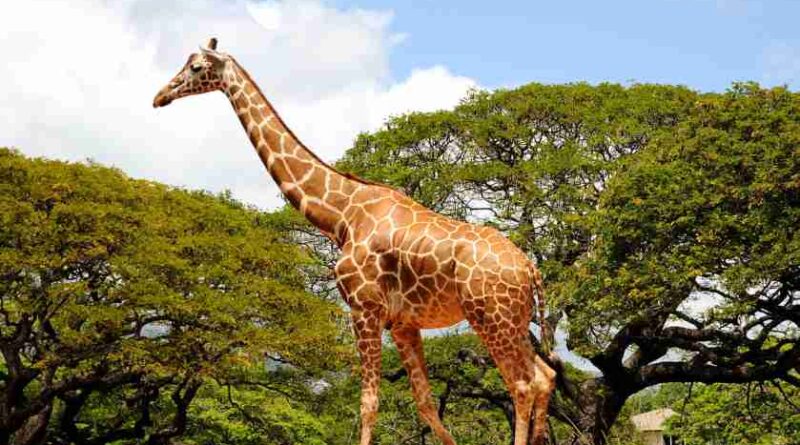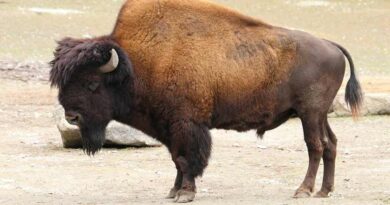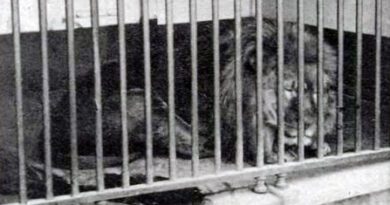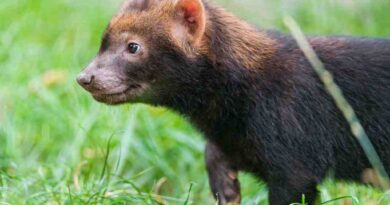GIRAFFE
If you’ve ever seen a baby giraffe come into the world, you’ll never forget it. It is one of the most amazing births in the animal world. The mother doesn’t help in any way. She doesn’t seem to care much about what’s going on. Instead of lying down to make the arrival easier, she stays standing and looks off into the distance. Her first job is to look over the horizon for anything that could be dangerous.
Before any killers show up, everything needs to happen quickly. The baby is born quickly, and its legs and hooves get tangled up as it falls to the ground. Its shape makes it hard for it to be born. Just before it is born, its long neck is tightly pressed against its equally long front legs inside its mother. When the birthing process starts, the feet come out first, then the head. After a short pause, the rest of the skinny body slides out, and its weight, which is the same as that of twenty human babies, pulls it free.
It slams into the ground so hard that it looks like it must be hurt. It’s good that this never happens. In just a few seconds, the calf opens its eyes and looks around at the strange new world. It stays still for a few minutes, breathing in the outside air for the first time. Then, with a lot of shaking, it starts to try to get up. This could manage as little as five minutes. Some baby cows
It might take longer, maybe as much as half an hour.
As soon as the new baby has pulled itself up and is standing (2 metres tall) on its skinny legs, it starts to wobble forward. It moves back and forth and side to side in a way that looks like an acrobat learning to walk on stilts. It gets control of itself quickly and takes its first, shaky steps toward its mother. She watches it closely now and bends down to lick its still-wet body with her long tongue. She also smells it to learn what it smells like.
Soon, the baby giraffe is feeding happily from its mother.
It will be able to run, play, and walk with her in just a few hours. It has now passed through the most dangerous part of its life. The young prancing giraffe grows quickly, and by the time it is a year old, its height will have doubled. In three years, it will be almost as tall as an adult. Then, if nothing strange happens, it can expect to live for about twenty-five years. The tallest animal in the world today is an adult giraffe. The record is held by a big male named George, whose head almost touched the 6.5-meter-high roof of his zoo home. So, if three men stood on each other’s shoulders, the one on top would still have to look up to see George’s face.
Even though most giraffes don’t get quite as big, they are still much taller than any other animal. A bull giraffe is about 5 metres tall on average. Cow giraffes are only about 4.2 metres tall, which is a bit shorter. The animals can reach high up into the trees when they are browsing leaves and shoots because they are so tall. Lower down, in the bushes, many different kinds of plant-eating animals can nibble on the greenery and have to compete with each other for food. But the tall giraffes don’t have any competitors. They can eat as much as they want in their own skyscraper world.
Giraffes eat in different ways depending on whether they are male or female. The males stretch their necks as high as they can, while the females lean forward at an angle. This means that the males and females can eat a little bit lower than each other. Because of this, they can stay close without getting in each other’s way when they’re browsing. Using this method, the animals can spend hours pulling off and swallowing leaf after leaf without being bothered. Wherever there are green trees with leaves, these giants with long necks can have a feast every day, and there is always more food than they could ever want.
This is good because they need a lot of food and spend about a third of their 24 hours a day eating. On a good day, each of them will rip off about 65 kilogrammes (a lot) of plants with their long, black tongues. These tongues are strong and sticky with saliva, and giraffes can stretch them out 45 centimetres when they are looking for food. They can wrap around individual leaves and shoots and pull them off quickly. Even thorns and spikes that are very sharp can’t stop them.
Most of their eating happens during the day, but at night, when it’s dark and there’s a full moon, you can see them slowly moving through the trees like big ghosts. People have always been curious about how giraffes sleep. Do they sleep on their sides like other animals with hooves, or do they sleep standing up? And where do their long necks rest? The answer is that they can doze off whether they are standing or lying down. This kind of half-sleep is called dozing. But it is not a full, deep sleep. For this, they lie down and twist their necks back and around, like sleeping birds. Their heads rest on their rumps, and they stay like this for about five minutes at a time. They can’t sleep for very long because there are killers who come out at night. They can only take short naps, and they usually only get about 30 minutes of deep sleep each night.
But for a giraffe, this is enough, especially when combined to the much longer times it spends sleeping and half-sleeping. In the wild, giraffes have a small alarm clock that looks like a tiny oxpecker or tick bird.
These live on their backs, where they have the important job of pecking at small parasites and getting rid of them. It also sounds the alarm by making a lot of noise when it sees danger coming. This quickly wakes up the sleeping giraffe, allowing it to jump up and run away before the killer gets too close.
During the day, when an adult giraffe is fully awake, it has few enemies to worry about. Even the powerful lion thinks twice before going after one. Even the strongest lion could be killed with a single kick from a bull giraffe’s huge feet, so the big cats usually keep their distance. Only the baby giraffes are easy targets for the hunters, and about half of the babies are killed before they are six months old. If their mothers weren’t always watching out for them, many more would die.
Giraffes have great eyes that can see in colour. They can see smaller animals clearly even when they are more than a half mile away. When combined with their long necks, their big eyes make it easy for them to keep a sharp eye out for any danger.
Even though they fight back hard when lions and other hunting animals attack, they rarely fight each other seriously. Males often act like they are fighting by swinging their necks at each other, but they rarely touch. Real battles happen only very rarely, when a strange male from a faraway place shows up. Then, the heads are used like huge clubs to deliver powerful blows to the side. The skulls of these animals are strong enough to take these blows.
The giraffe has short, blunt, hair-covered horns on top of its head that can be used to hammer an opponent. In the old giraffe house at the London Zoo, a keeper hit the wall with a stick many years ago, leaving a deep dent in the woodștiing. It seems that a giraffe in a zoo sometimes sees its human companion as a possible rival, and every once in a while, the animal wants to remind him who’s in charge. Because of how long its neck is, it doesn’t seem to be able to hit people very accurately when it attacks.
Some people think that the giraffe’s neck has a lot of bones, but this is not the case. In fact, it doesn’t have any more than any other animal with feet. Like all of its relatives with short necks, it only has seven neck bones, but each one is much longer than the similar bones in a deer or an antelope. The giraffe’s long neck makes it easy for it to eat, but it makes it hard for it to drink. Animals that live in the hot grasslands and broken forests of tropical Africa need to drink every day at a waterhole. They may have to walk many miles to get there, but the trip is an important part of their daily lives.
Once they get to the water’s edge, the giraffes have to take a clumsy stance with their front legs spread wide apart, as if they are about to do the splits. In this position, they don’t feel like they can do anything, so they are nervous and keep lifting their heads to look for possible enemies.
If they didn’t have special blood vessels in their necks, quickly lifting their heads out of the water could easily make them lose consciousness. These blood vessels can close off on their own to stop blood from leaving their heads. When the giraffes go back to the trees, they feel a lot safer. When seen in the half-light of dusk or dawn, the patterns on their coats help them blend in with the background. When we see a giraffe up close in a zoo during the day, these patterns may look bright, but in the dim light of the evening or early morning, they help to hide the large animals from the eyes of killers who are far away. Even though they have dark coats, giraffes can still protect themselves with their long legs if animals that hunt get too close. Adults can run up to 40 miles per hour at full speed and can easily outrun most enemies.
When it’s daytime in Africa, the patterns on the animals’ coats help them in a very different way. Then they serve as tags. If you look closely at how the giraffe’s markings look like a net, with pale lines surrounding small reddish-brown spots, you will see that each giraffe has a unique pattern. It is likely that giraffes can tell each other apart by these “personal” patterns, just like people can tell each other apart by their fingerprints. The pattern of each giraffe never changes from the time it is born until the time it dies.
One of the strangest things about the giraffe is that it doesn’t make a lot of noise. Since it is such a big animal, you might think it would roar or bellow, but all it can do is grunt, gurgle, whistle, hiss, or snort. When they are scared, baby giraffes can make a little bleating sound, but that is about as loud as this amazing animal gets. Julius Caesar brought the first giraffe to Europe from Africa. He did this after he put Cleopatra on the throne of Egypt. As the amazing animal was paraded through the busy streets of the great city, the Roman crowds were amazed. They had never seen anything like it before, and its strange shape and markings made them wonder what it was. One well-known Roman poet said it must be a cross between a camel and a leopard. This gave it the name “camelopard,” which stuck for hundreds of years.
When it became clear that this idea was wrong, the name “camelopard” was changed to “giraffe,” which is an Arab word, and we have kept that name ever since.



